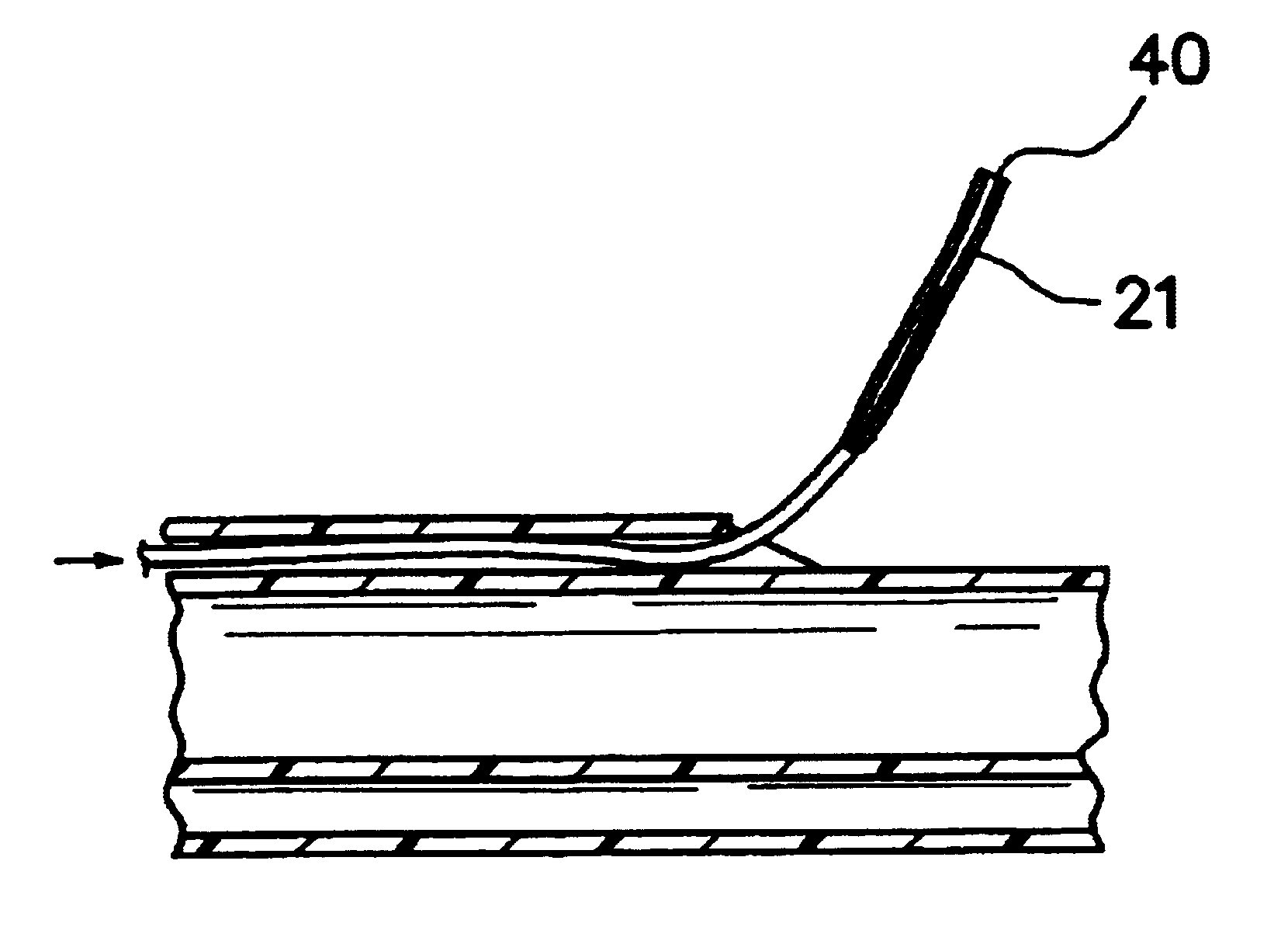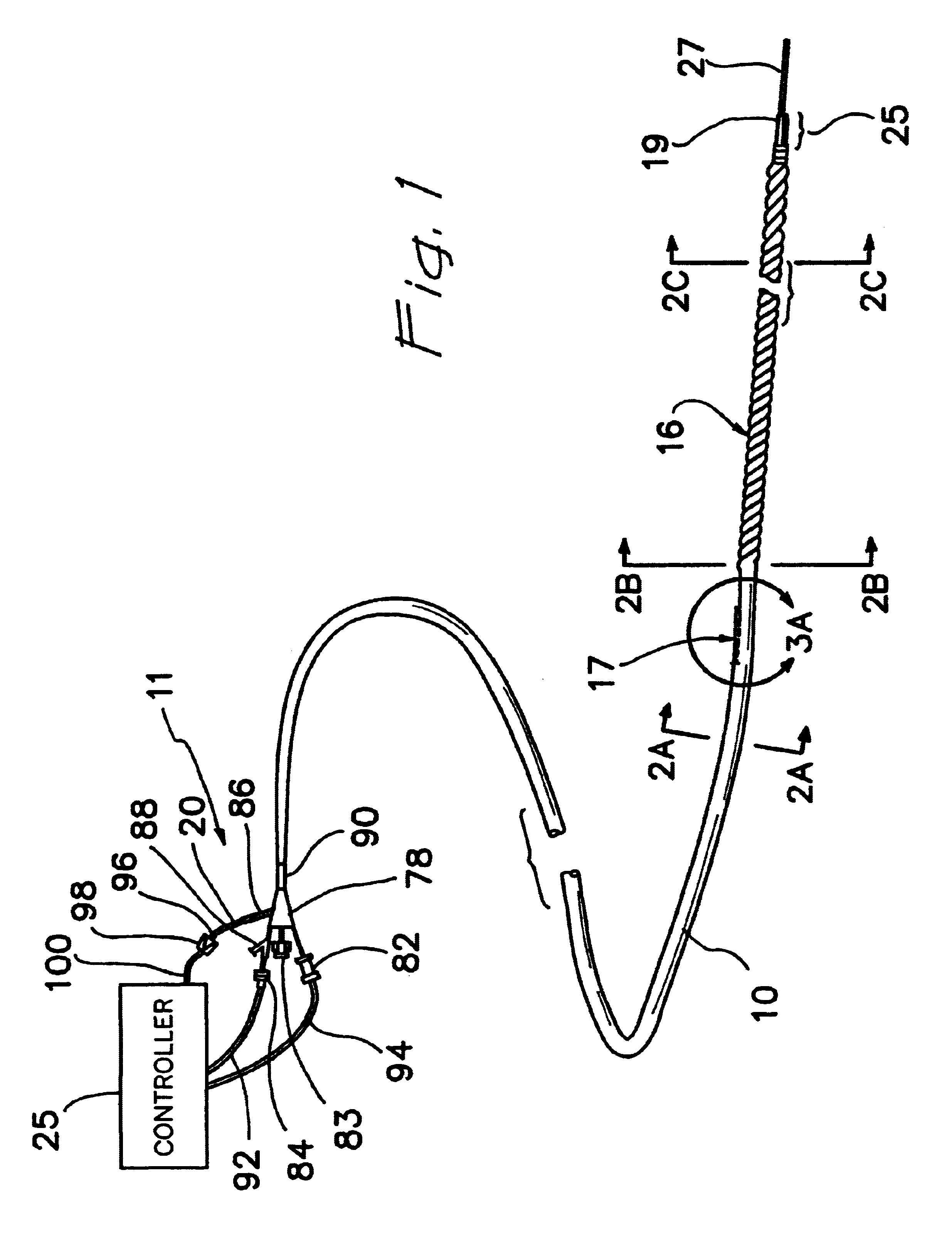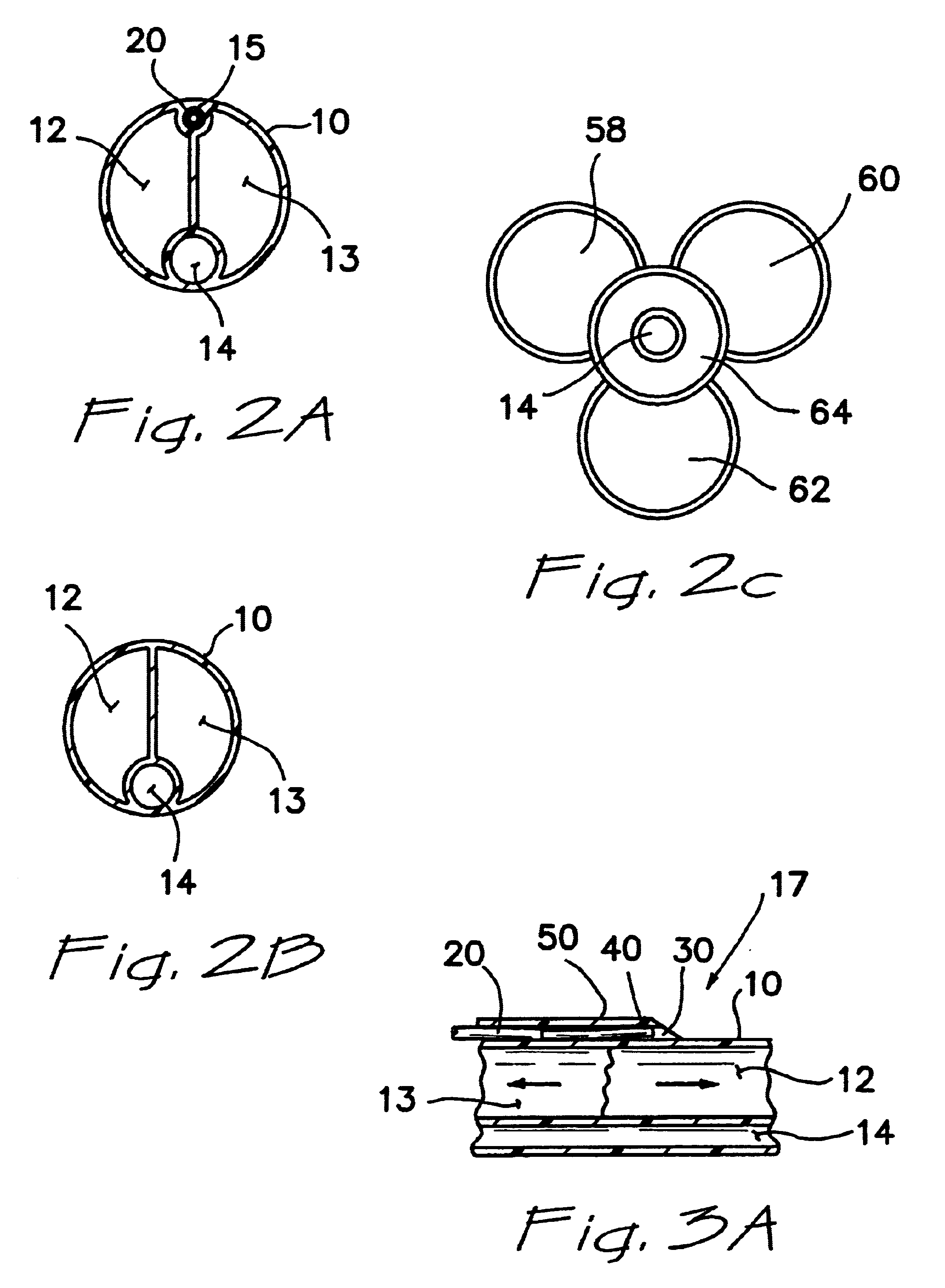ccidental hypothermia and
hyperthermia are generally harmful, and if severe, the patient is generally treated to reverse the condition and return the patient to normothermia. A
Simple surface methods for cooling such as cooling blankets, immersion in cold water or ice baths, or
alcohol rubs are generally ineffective for inducing hypothermia.
This may increase the generation of
metabolic heat by 200-500% and generally makes induction of hypothermia in an awake patient impossible by
surface cooling alone.
Further, the
shivering itself is so uncomfortable and exhausting for the patient that this is altogether unacceptable for an awake patient.
Even under these conditions,
surface cooling which necessitates cooling through the
skin and surface fat
layers and the use of generally low power
surface cooling devices, is too slow and inefficient to be an acceptable means of inducing therapeutic hypothermia.
Furthermore, if control of the patient's temperature is desired so as to attain and maintain a target temperature (sometimes but not always normothermia), or to reverse hypothermia and re-warm the patient at a predetermined rate, surface cooling and warming far too slow and inefficient to give the required level of prompt and precise change in the patient's
core temperature to allow these methods to control the patient's thermal condition.
Because a large volume of blood is circulated through the
machine in a short time, this by-pass method may be both fast and effective in changing the patient's
core temperature and in controlling that temperature, but has the disadvantages of requiring a very invasive
medical procedure which requires the use of complex equipment, a team of
highly skilled operators, is generally only available in a surgical setting where the patient has undergone a
thoracotomy (had its chest split and opened), and involves mechanical pumping of a huge quantity of the patient's blood and channeling that blood through various external lines and conduits, all of which is generally very destructive of the blood tissue resulting in the cytotoxic and thrombolytic problems.
In fact, most surgeons using such by pass machinery tend to avoid its use for longer than four hours, much less if at all possible, which is an inadequate period of time for treatment of some conditions such as
stroke.
Each of these techniques, however, suffers from significant shortcomings.
Some probes may not give an accurate temperature of the
target tissue and therefore may not provide the information necessary for controlling the ETM procedure.
For example, if the target is the
core temperature of the patient, a
skin temperature is generally not an accurate representation of the core temperature; if
cardiac muscle is the
target tissue, a bladder probe might not be sufficiently accurate.
The probe might not be sufficiently responsive to changes in temperature to provide a current temperature of the target temperature.
For example, a rectal temperature probe is generally very slow to respond to temperature changes in the core, and thus if the controller is receiving its temperature
signal from a rectal probe, it might not be able to respond with sufficient speed and precision to changes in the core temperature.
Bladder temperature probes also tend to suffer from this problem.
Some probes are awkward and too difficult to use.
For example, tympanic probes are difficult to place and tend to fall out and thus not provide an accurate temperature measure.
Other probes may measure the temperature of the
target tissue, but have other disadvantages that make their use undesirable.
For example, needle temperature probes that are stuck directly into the target tissue, of course, measure the temperature of the target tissue, but are invasive and require the patient suffer an additional needle stick.
They are also dependent on accurate placement in the first instance which may be a difficult and
highly skilled procedure, and require that they do not move after placement, requiring constant monitoring and taping or the like which may be obtrusive and awkward.
This may require two probes placed in different locations that may reflect different temperature profiles, a very real problem for controlling ETM.
It may require that two probes be attached together, which makes the probes large and often clumsy to use.
This may greatly complicate what may already be a crowded operating room or other area and add undesirable complexity to the procedure.
Temperature probes placed directly in the bloodstream in one of the
great vessels such as the
inferior vena cava (IVC) generally accurately reflect the core body temperature which is also generally the temperature of the brain or heart tissue, currently the two most common target tissues for ETM, but if the probe is placed some distance from the heat exchange catheter such placement usually involves an additional incision or puncture into the vasculature, and if the probe is placed in the same general vicinity as the heat exchange catheter, there is a likelihood that the temperature reading will be unacceptably influenced by the heat exchange region on the catheter or the temperature of the catheter shaft and thus not represent the temperature of the target tissue sufficiently to serve as a control temperature for the system.
While these two temperatures may often be the same, there will be occasions where they may be unacceptably different.
 Login to View More
Login to View More  Login to View More
Login to View More 


